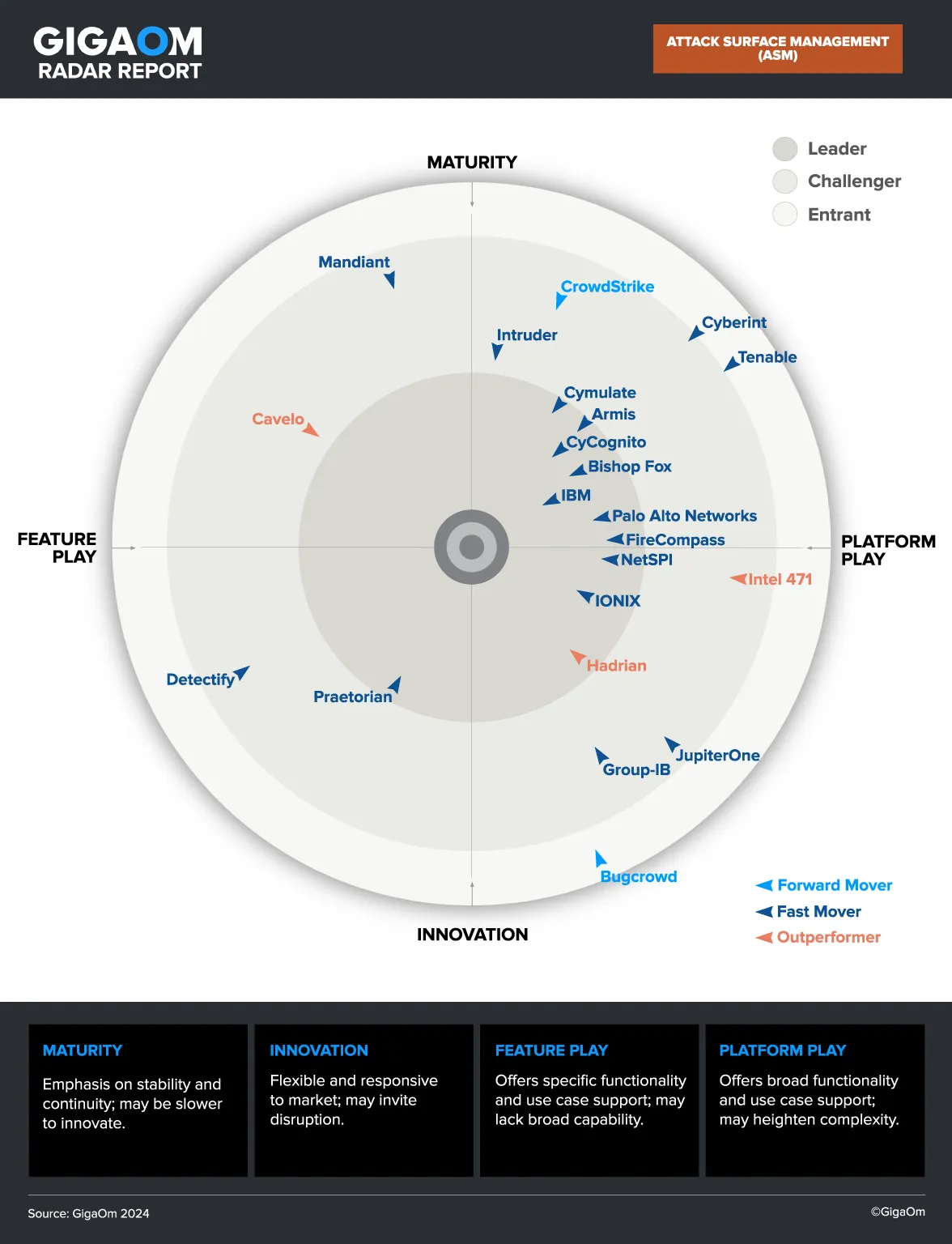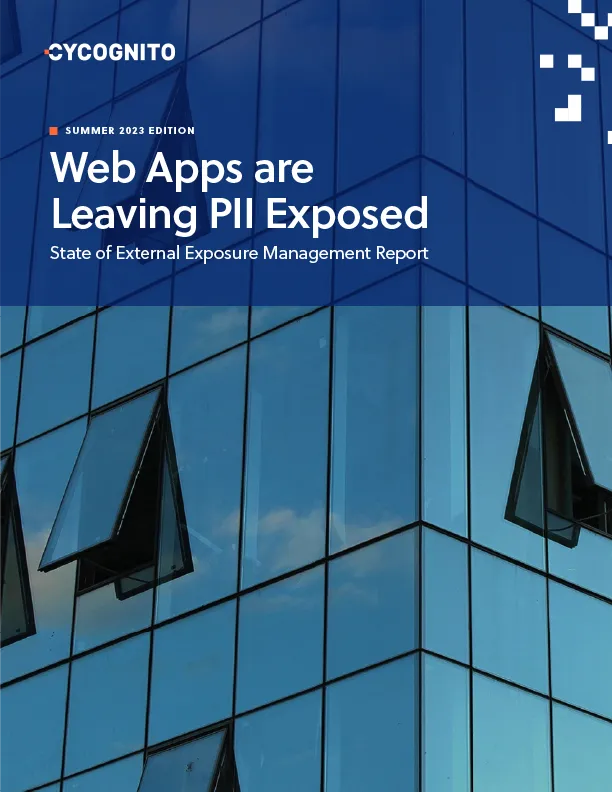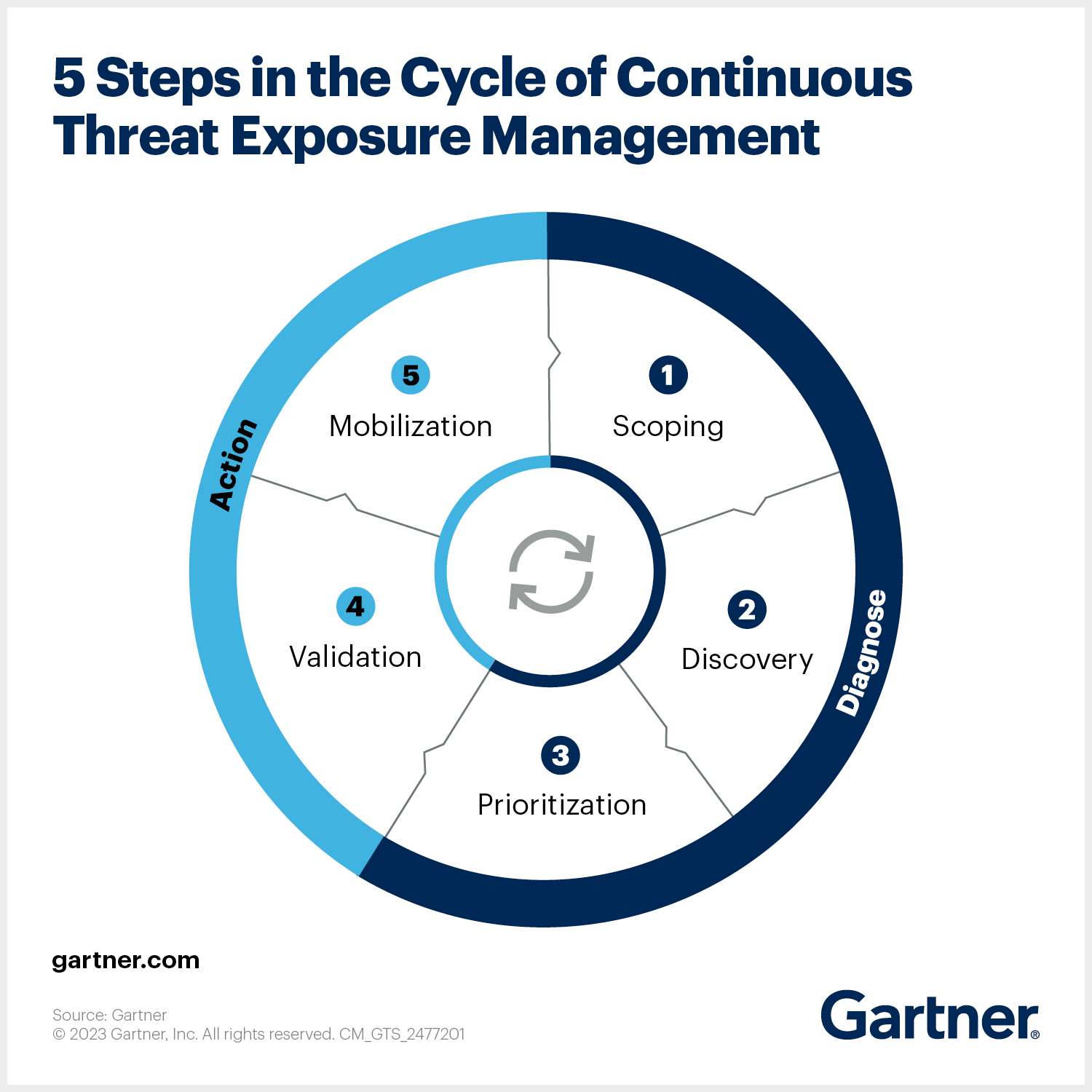What Is Exposure Management in Cybersecurity?
Exposure management is a set of processes and technical solutions which allow organizations to assess the visibility, accessibility, and risk factors of their digital assets. There are two core component of an exposure management strategy:
- A Cyber Threat Exposure Management (CTEM) framework: Lays out the organizational structure and process for exposure management. A CTEM framework has five key steps: Scoping, Discovery, Prioritization, Validation, and Mobilization.
- Cybersecurity Mesh Architecture (CSMA): Enables organizations to combine security tools, such as External Attack Surface Management (EASM), application security, cloud security, and Cyber Asset Attack Surface Management (CAASM), to create an exposure management solution. We cover these and other technology components of exposure management in more detail below.
While organizations can develop exposure management capabilities in-house, managed security service providers (MSSPs) are starting to offer exposure management services, providing everything from threat identification to assisting with remediation efforts. There are several types of emerging exposure management services:
- Penetration Testing as a Service (PTaaS): Performs continuous, automated and manual testing for security vulnerabilities within an organization's network and systems. PTaaS providers offer automated tools and expertise to identify and exploit security weaknessess and provide organizations with remediation guidance.
- Attack surface management services: Focus on providing a comprehensive view of all the accessible points (the attack surface) within an organization's IT environment that could be exploited by attackers, including shadow IT and forgotten or misconfigured components. These services provide insights into potential vulnerabilities and support mitigation strategies for reducing the attack surface.
- Internet of Things (IoT) and Operational Technology (OT) exposure management: Dedicated to managing the unique risks associated with IoT and OT environments. They involve identifying and inventorying IoT and OT assets, assessing their security posture, monitoring for abnormal behavior indicative of a security incident, and providing guidance for securing devices against potential threats.
What Is the Difference Between an Exposure and a Vulnerability?
The terms 'exposure' and 'vulnerability' are often used interchangeably in the context of cybersecurity, but they refer to different concepts.
Exposure refers to the state of being subject to potential harm from external threats. In other words, it reflects the possibility that an organization's systems may be attacked by cybercriminals.
Vulnerability refers to the weaknesses within the system that could be exploited by these external threats.
While it is important to fix vulnerabilities, it is equally important to understand and manage exposure. For example, the owner of a house in a risky neighborhood (equivalent to an exposure in cybersecurity) could take proactive measures like installing a security system or joining a neighborhood watch program, in addition to locking doors and fixing broken windows (equivalent to vulnerabilities). Exposures help an organization think more strategically about their cyber risks and take proactive action to reduce or mitigate them.
Benefits of Exposure Management
Simpler Risk Mitigation
One of the major benefits of exposure management is that it simplifies the process of risk mitigation. By identifying and assessing all potential points of exposure, it becomes much easier to prioritize and address these risks. Instead of reacting to threats as they emerge, organizations can proactively manage their risk exposure and reduce the likelihood of a successful cyber attack.
This proactive approach not only simplifies risk mitigation but also makes it more effective. By addressing potential points of exposure before they can be exploited, organizations can prevent many cyber attacks from happening in the first place. This can significantly reduce the potential impact on the organization, both in terms of financial loss and damage to reputation.
Stronger Operational Resilience
By reducing the likelihood of a successful cyber attack, organizations can ensure that their operations are not disrupted by such attacks. This is particularly important in the modern business environment, where even a minor disruption to IT systems can have a major impact on an organization's operations.
Furthermore, by identifying and addressing potential points of exposure, organizations can also reduce the potential impact of a successful cyber attack. For instance, by implementing robust backup and recovery procedures, organizations can ensure that they can quickly recover from a cyber attack and resume operations with minimal downtime.
Tighter Regulatory Compliance
Exposure management can also help organizations achieve tighter regulatory compliance. Many regulatory bodies now require organizations to have a robust cybersecurity strategy in place, and exposure management is a key part of this. By demonstrating that they are proactively managing their cyber risk exposure, organizations can not only comply with these regulations but also avoid potential fines and penalties.
Furthermore, by complying with these regulations, organizations can also enhance their reputation among customers, partners, and other stakeholders. This can provide a competitive advantage, as customers are increasingly concerned about the security of their data and are more likely to do business with organizations that take cybersecurity seriously.
Long-Term Operational Sustainability
Finally, exposure management can contribute to long-term sustainability. In today's cybersecurity environments, organizations that fail to manage their risk exposure are unlikely to survive in the long term. Exposure management can help organizations continue to operate and thrive, even in the face of growing cyber threats.
What Is External Attack Surface Management (EASM)?
External attack surface management (EASM) is a foundational component of exposure management, which helps organizations identify and manage risks associated with Internet-facing assets and systems. The goal is to uncover threats that are difficult to detect, such as shadow IT systems, so organizations can better understand your organization’s true external attack surface.
EASM processes, tools, and managed services can help detect threats across servers, public cloud services, credentials, and third-party partners. Ideally, an EASM solution should help identify cloud misconfigurations, software vulnerabilities, exposed credentials, shadow IT, and various other security weaknesses that threat actors can exploit.
How EASM Works with Other Security Solutions to Enhance Exposure Management
Cyber Asset Attack Surface Management (CAASM)
CAASM is a security solution that mainly addresses asset visibility and exposure. Via API integrations with existing tools, organizations can view all assets (both internal and external), query consolidated data, pinpoint vulnerabilities and gaps in security controls and address them.
CAASM and EASM both strive to enhance the visibility of an organization's assets and their associated threats. However, EASM focuses purely on external assets and identifies those assets through active internet scanning. EASM can be a data source to provide external visibility within CAASM.
Application Security Testing (AST)
Application security testing focuses on tools and resources used to identify weaknesses in software applications. EASM enhances AST by automating the identification process for insecure software, including applications not actively supervised by security teams. These can be services in use by developers, but unknown to security teams, software deployed in the past and currently unused, or public code repositories. Unprotected applications and APIs can pose potential threats to companies.
Cloud Security
Cloud security solutions offer technologies to safeguard cloud-based workloads and data. EASM can empower these cloud security solutions by spotting an organization's assets across different cloud providers, thereby improving security management and governance in the cloud. This support is vital because, although cloud security solutions protect cloud properties effectively, they require organizations to be aware of their existing cloud assets.
Specifically, EASM complements Cloud Security Posture Management (CSPM) solutions. CSPM employs standard frameworks, enterprise policies, and regulatory requirements to proactively and reactively analyze and ascertain the risk/trust of cloud service configurations and security settings. In combination with EASM, CSPM can be used to protect cloud assets wherever they are deployed, even without the knowledge or permission of the organization.
Threat Intelligence (TI) and Digital Risk Protection Services (DRPS)
DRPS helps to keep an eye on the surface web, deep web and dark web to detect potential threats to pivotal digital assets. It gives a detailed picture of how threat actors operate and the tactics they employ.
DRPS is mainly focused on threats to company's brands, customer information, data, and executives, preventing fraud, theft and impersonation attempts, while EASM has a wider asset discovery capability. Combining EASM and DRPS provides a more comprehensive overview of a company's digital assets and associated risks.
Vulnerability Management Platforms
Vulnerability management platforms find, classify, prioritize, and coordinate the resolution or reduction of security issues in assets managed by the organization. EASM supplements vulnerability management by identifying risks deriving from an organization’s internet-visible assets and systems, including those that may not be well-managed by the organization or undiscovered.
Best Practices for Exposure Management
Here are a few best practices for implementing exposure management in your organization:
- Encourage collaboration across departments, to enable faster, more informed decisions and more effective response to newly discovered threats.
- Centralize data from across the organization. This helps spot trends, weak-spots, and concealed threats that might evade detection in isolated data silos.
- Focus on severe vulnerabilities, using EASM capabilities to prioritize vulnerabilities by their potential impact. This ensures you allocate resources to the most important risks.
- Use metrics for continuous improvement. Metrics such as time to detection (MTTD), mean time to repair (MTTR), and time to mitigate (TTM) can help assess and improve the value of the EASM solution and integrated technologies.
Cyber Exposure Management with CyCognito Attack Surface Management Platform
The CyCognito platform addresses today’s vulnerability management requirements by taking an automated multi-faceted approach in identifying and remediating critical issues based on their business impact rather than focusing on the generic severity of the threat alone. To do this, you need a platform that continuously monitors the attack surface for changes and provides intelligent prioritization that incorporates organization's context.
The CyCognito platform addresses today’s vulnerability management requirements by:
- Maintaining a dynamic asset inventory with classification of the entire external attack surface, including exposed on-premise and cloud-hosted assets like web applications, IP addresses, domains and certificates, eliminating the need to rely on outdated or incomplete information from collaboration tools, spreadsheets, or emails. This approach significantly reduces the burden of tedious, error-prone and costly processes.
- Actively tests all discovered assets to identify risk. Active testing, including dynamic application security testing, or DAST, uncovers complex issues and validates known issues, with low false positives. Each exploited asset is assigned a security grade based on its criticality to the business.
- Prioritizing critical issues, guiding security teams to focus on the most urgent threats. Our unique risk-based prioritization analysis goes beyond the common vulnerability scoring system (CVSS), and incorporates factors like asset discoverability, asset attractiveness, exploitability, business impact and remediation complexity. Integrated tactical threat intelligence identifies the handful of attack vectors that pose the greatest risk.
- Streamlining communications between remediation teams by providing comprehensive, verifiable evidence for each exploited asset. This evidence includes detailed risk assessments, asset ownership information, and actionable remediation guidance. The platform seamlessly integrates with SIEM, SOAR and ticketing system tools like Jira, ServiceNow and Splunk to facilitate information sharing and collaboration.
Learn more about CyCognito Attack Surface Management.




